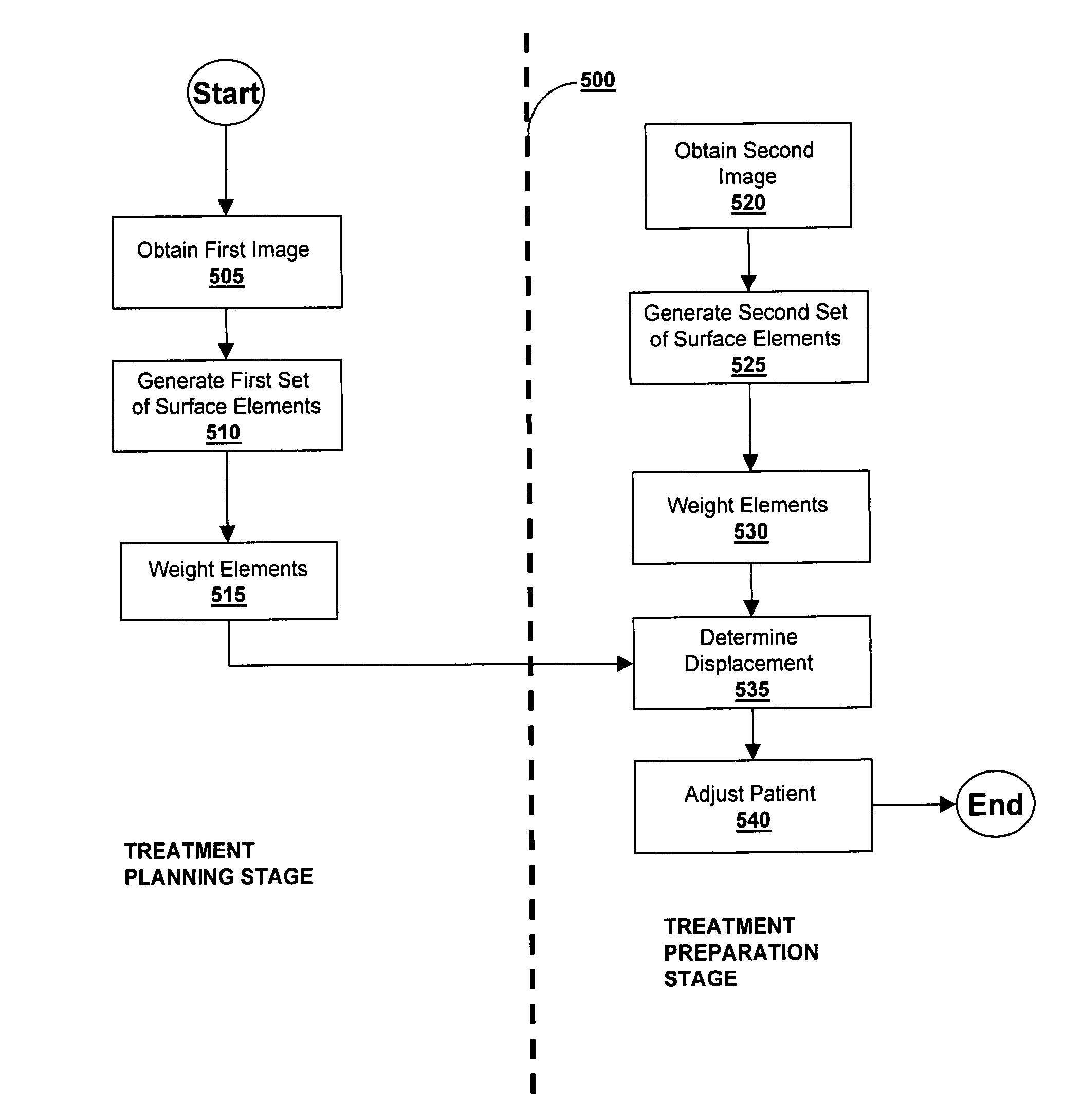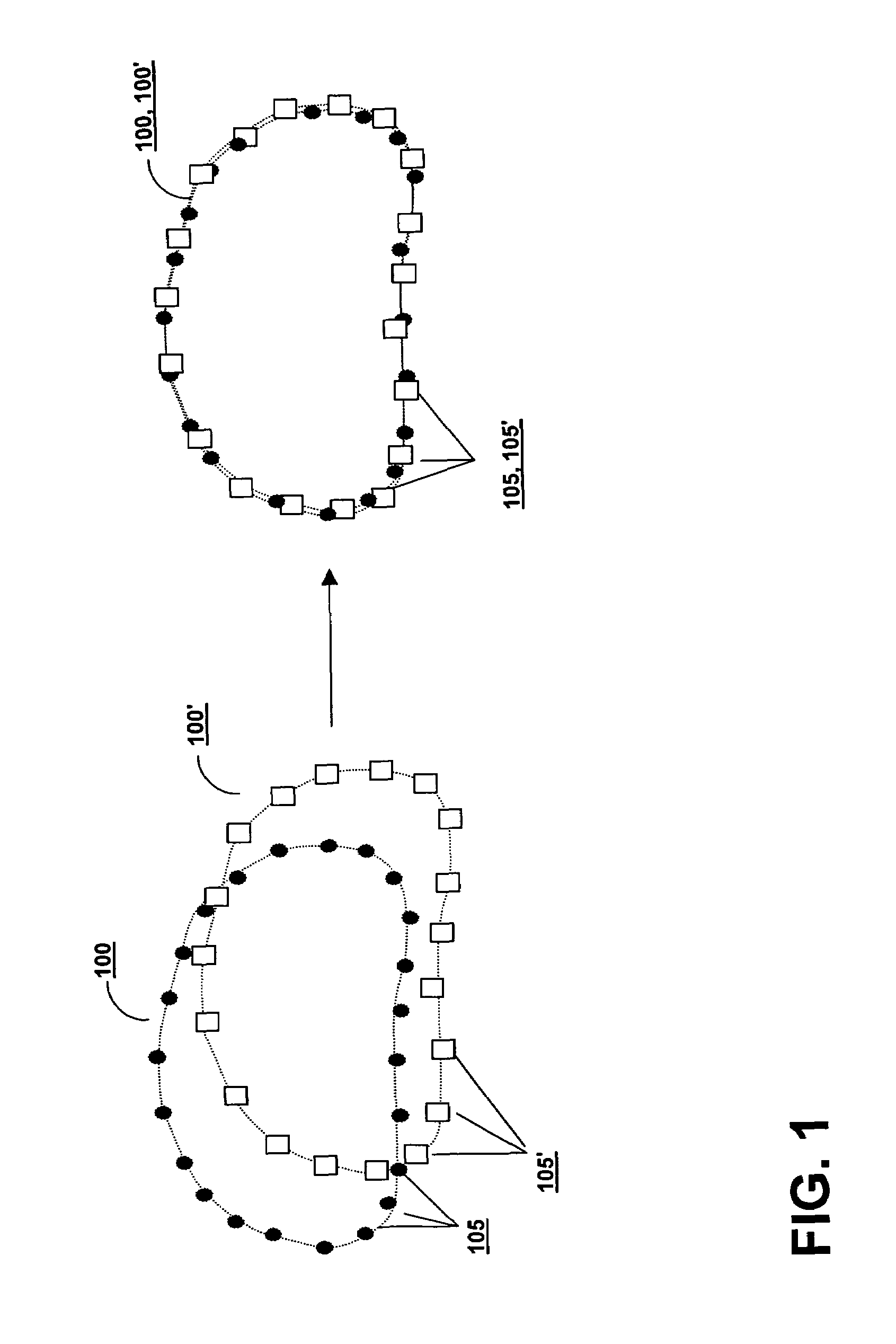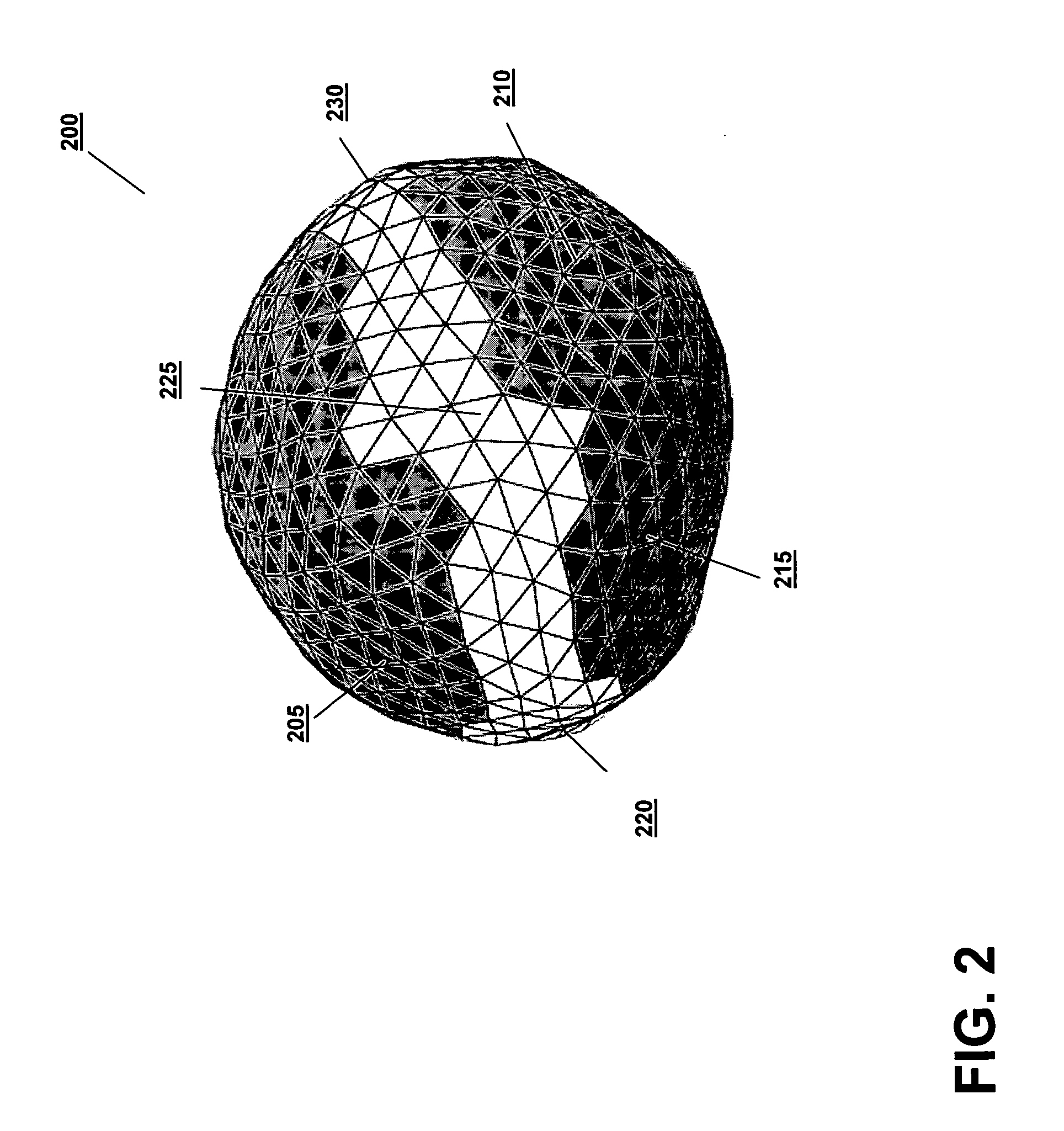Weighted surface-to-surface mapping
a surface-to-surface mapping and weight technology, applied in image data processing, radiation therapy, sensors, etc., can solve the problem that the original treatment plan may no longer be optimal, and achieve the effect of facilitating rapid and accurate treatment position adjustmen
- Summary
- Abstract
- Description
- Claims
- Application Information
AI Technical Summary
Benefits of technology
Problems solved by technology
Method used
Image
Examples
Embodiment Construction
[0022]Imaging is often used by oncologists in determining the treatment parameters of radiation therapy plans such that the prescribed radiation is sufficient to eliminate the cancerous cells and while conforming the shape of the dose distribution to a target volume to the greatest extent possible, thereby sparing healthy tissue from exposure to potentially harmful doses of radiation. To develop a preferred treatment plan, simulations can be performed to design a set of beams which accomplish this goal that calculate the dose at each point in the patient resulting from this set of beams. The dose distribution can be represented, for example, as isodose lines or as 3D isodose surfaces within the patient. The treatment goal is to encompass the lesion and an appropriate safety margin within the 100% isodose surface. The treatment plan is then administered, usually at a later date and over a period of weeks, based on the treatment parameters. One shortcoming of this approach is that the...
PUM
 Login to View More
Login to View More Abstract
Description
Claims
Application Information
 Login to View More
Login to View More - R&D
- Intellectual Property
- Life Sciences
- Materials
- Tech Scout
- Unparalleled Data Quality
- Higher Quality Content
- 60% Fewer Hallucinations
Browse by: Latest US Patents, China's latest patents, Technical Efficacy Thesaurus, Application Domain, Technology Topic, Popular Technical Reports.
© 2025 PatSnap. All rights reserved.Legal|Privacy policy|Modern Slavery Act Transparency Statement|Sitemap|About US| Contact US: help@patsnap.com



